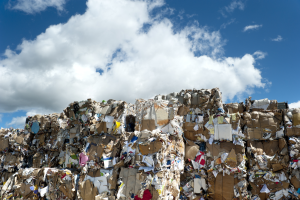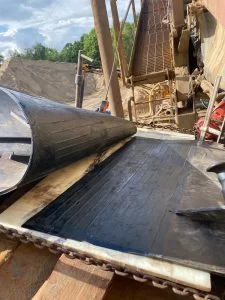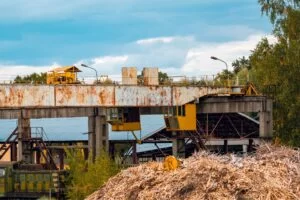As the UK has recently baked in temperatures of over 40°c, The British Metals Recycling Association (BMRA) has issued a warning after a sharp increase in the number of fires in the sector. The UK’s scrap metal recycling sector is thought to be worth around £7bn and continues to expand, and the UK steps up efforts to meet sustainable standards.
The Chief Executive of the BMRA, James Kelly, wrote an open letter to the association’s members, reminding them of the risks, and the consequences of not following the correct safety procedures at scrapyards.
Particular caution was urged in the handling and storage of lithium-ion batteries or incidental items of WEEE-containing batteries. These items have been identified as the most likely source of a fire. BMRA warned that sanctions could be taken against companies who are found to be incorrectly disposing of batteries.
Scrapyards regularly catch fire, despite strict health and safety regulations. During a blaze in Newark, Nottinghamshire, in 2019, 1,000 tonnes of scrap metal was alight at the worst stage. It is thought that most of the scrap was vehicles, or vehicle parts.
Fire Service commander Colin Poyzer explained to the BBC that it is often the non-metallic parts which spark and sustain the blaze, such as fuel, interior trim materials, and plastics, in cases where the vehicles have not been through the stripping and shredding process.
Other metals, including copper, aluminium, bronze, and tin, are usually present in vehicles, and burn readily. However, magnesium, which is a lightweight metal used in vehicle manufacture, was also singled out for blame. This is because it has a very high melting point, and reacts easily with oxygen.
Dr Russell Goodall, a metallurgy expert from the University of Sheffield, explained: “The first question is what is burning? While there are many features we might pick on, like it being hot, there being flames or smoke, etc, it can be defined by a chemical reaction – the reaction with oxygen in the air which, for flammable materials, lets out a lot of energy.”
He added: “Most metals under normal conditions will combine with oxygen to some small extent, as in corrosion or rusting processes, but this happens at a very slow speed, and doesn’t free the large amounts of energy quickly that we associate with burning.
“To get a combustion reaction with a metal, we need to speed things up. One of the easiest ways to speed up the chemical reaction is to increase the temperature, and metals are more likely to burn – react violently with oxygen – if the temperature is high.”
Because metal burns so intensely, it is a very difficult challenge for firefighters. Temperatures may reach a mind boggling 1,000°c at the heart of the flames. They are also resistant to water, so the usual methods of tackling the fire with hoses is less effective. One method of control is to create firebreaks to prevent the fire spreading any further.
If you are looking for conveyor belt skirting, please get in touch today.




